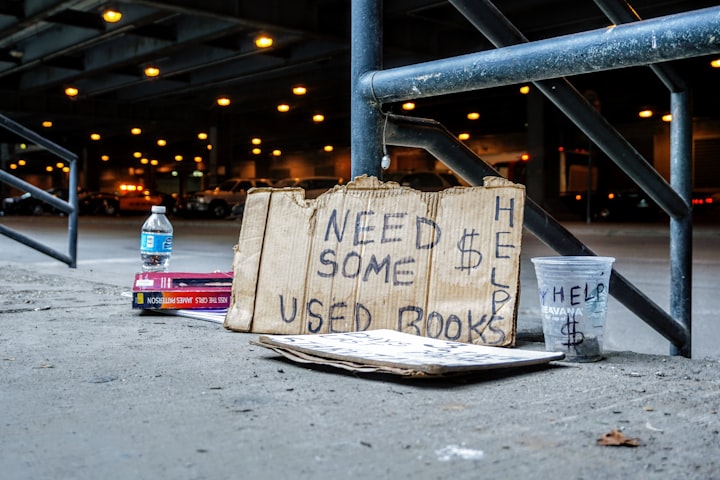Give Them a Rainbow: An Incomplete Guide for the Average Ally
So you want to be an Ally?

What a title!
If you’re here, you might be somewhat familiar with the "sudden craze" that’s sweeping the nation. The label-filled world, the colourful alphabet soup—the LGBTQIA+. No, that’s not a key smash. Promise. The LGBTQIA+ is the way to refer to those in the world who did not “default” to straight. Now, it may seem that all these rainbows came out of nowhere, that the labels are just a millennial fad, and that as a self-proclaimed ally you’re doing all you can to be supportive and understand.
Ding-dong. You’d be wrong, friend.
None of that is correct.
First, a little history. While the term “homosexual” wasn’t coined until the 19th century, research has shown evidence of non-straight relationships from the ancient Greeks, and in 1998, evidence that suggested the existence of homosexuality was found that dated back to 2400 B.C. That’s definitely not millennial. For centuries, those who have identified as LGBT have been ostracized for various reasons, but with today’s media-driven society, people are able to connect and see on a global scale that they are not alone and that there are others like them. They are able to form a community.
Now, something that can admittedly get confusing is the plethora of labels used by the LGBT+ community. More commonly known (but not always properly understood) are ones such as gay, lesbian, trans, and bisexual. Less commonly known, and most certainly less understood, are asexual, demisexual, pansexual, intersex, and questioning. These lesser known labels seem to get a lot of grief due in part to the lack of information about them. Asexual and demisexual typically refer to those who do not feel sexual attraction, or do under very specific circumstances. Intersex is those who were born with both male and female genitalia. While these labels and their definitions are certainly a LOT to take in, they form a crucial part of the identity of the people in the LGBT+ community. To those in the community, it is their way of knowing not only is there a word for what they are going through, but the knowledge that they are not alone.
But wait, there’s more! Believe it or not, straight people do play a role in all this. However, it may not be the one they think it is. “Ally” is a term for a straight individual who is a support person in the LGBT+ community. From time to time, an ally may have the same role as a non-straight person. Some examples of alliance are below.
Transition and (Not) Loss
“For years I had a male friend, Z. After some time of knowing him, he began to express interest in females—more specifically, he showed interest in being female. Years of struggle with identity later, she came to the realization that she was trans. She, with the help and support of friends and family, was able to begin her transition. While all that was great for her, I felt like an absolutely terrible person. I couldn’t handle that the person I had known for all these years suddenly felt gone. Someone you love is still here, and they are still them, but at the same time, they are this new person? How do you wrap your head around that?”
This is something that a lot of people can struggle with. Struggling to understand is not the same as not being accepting of the trans person. This is something that doesn’t affect just straight people, but anybody who is close to someone going through or having completed their transition. As an ally, the best thing you can do for them is be there for them. Ask questions, truly try to understand. More often than not, they will be more than willing to help you. Even the simple things, like asking when and where it’s safe to use their chosen name and pronouns (and using them!) can make a huge difference. The big thing to remember is that the person you know and love is not gone. They are still the same person, they may just look a little different. It's like someone getting a drastic haircut, or a tattoo. They may look different now, but they are the same person you know, and love.
Some people also at times have difficulty using pronouns correctly. Personally, the people I know who have transitioned (or are still transitioning) have the same mindset. If a person is honestly trying to change how they speak, then the occasional slip up is generally not offensive. On the other hand- if you are purposefully misgendering someone, using their "dead" name, or just being hateful about it, that is most certainly NOT appropriate.
The Sweetest Thing
“I am demisexual and my boyfriend is straight. I wanted to go to Pride for the first time ever, but was afraid to go alone. My boyfriend agreed to go with me, and I am so glad we went! It was amazing seeing so many people from the community being able to show who they are and not be afraid. But the most amazing thing for me wasn’t the festivities or the people. The best thing for me came weeks afterward. You see, Pride was on one of the hottest days that year. For some reason my boyfriend had decided to wear all black. I thought it was an odd choice but hadn’t said anything. When I finally did mention it, his response absolutely floored me. He pointed out that he was straight and that Pride wasn’t meant for him. It was meant for me and people like me. He decided to wear all black so that I and the rest of the community could have our rainbow. It was something so small and silly, but it meant the absolute world to me.”
Allies can be an integral part of the LGBTQIA+ community. They help form important parts of our support systems. They are friends, family, and loved ones. Many times we wouldn’t be safe to be who we are without them. However, there are times when self-proclaimed allies take things too far and make it about them. They will say they are allies to win brownie points in social circles, but when it comes down to it, they will be… less than helpful. Real allies understand that they are needed, but also understand when to step forward and when to let the community do what they do best.
Moving Forward
While this is still a (VERY) incomplete guide, the best thing an ally can do is to step up and step back. Put simply, to be an ally, you have to be there for the members of the LGBTQIA+ community, regardless of what letter they use.
For more information on how to be an ally, or to learn more about LGBT+, visit the links below.
Allies, LGBT+, and You:
10 Ways to Be an Ally and Friend
Sources:
About the Creator
Hunter Delles
Hunter is an avid reader and writer. Obsessed with video games, D&D, Harry Potter, and more, you can count on her for fun, factual, and fantastic stories. Hunter lives in Missouri with her ginger Viking and their two cats.






Comments
There are no comments for this story
Be the first to respond and start the conversation.